RDP 2024-10: How Do Global Shocks Affect Australia? Appendix C: Supplementary VAR Results
December 2024
- Download the Paper 1.87MB
C.1 Trade FEVDs
The global shocks explain close to 30 per cent of the FEV for Australia's terms of trade and for the goods and services trade balance when subtracting resource exports. The global shocks explain very little of the variation in resource exports. Although long-run trends in resource exports clearly depend on foreign demand, Australian producers of some commodities (especially iron ore) are generally low-cost producers compared to global competitors, such that they tend to produce to their maximum capacity regardless of shifts in demand (RBA 2015). Therefore short-run variation in volumes is likely to be driven more by supply shocks than demand shocks. Prices on the other hand appear more responsive to demand.
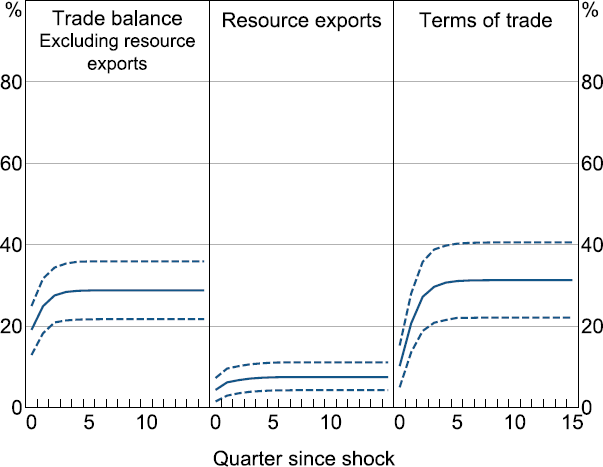
Note: Dashed lines show 68 per cent confidence interval.
C.2 Impulse response functions
IRFs for a shock to the third factor
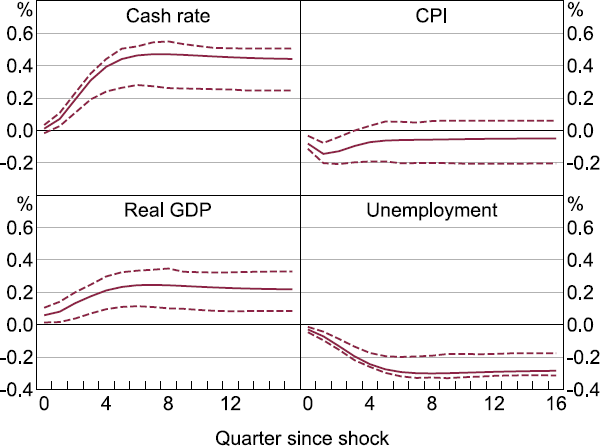
Note: Dashed lines show 68 per cent confidence interval.
IRFs for a shock to the first factor
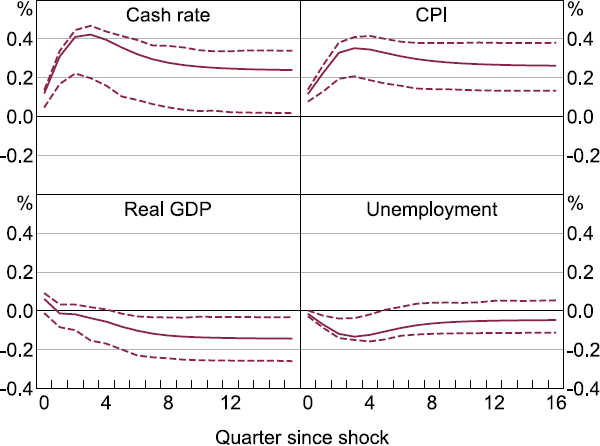
Note: Dashed lines show 68 per cent confidence interval.
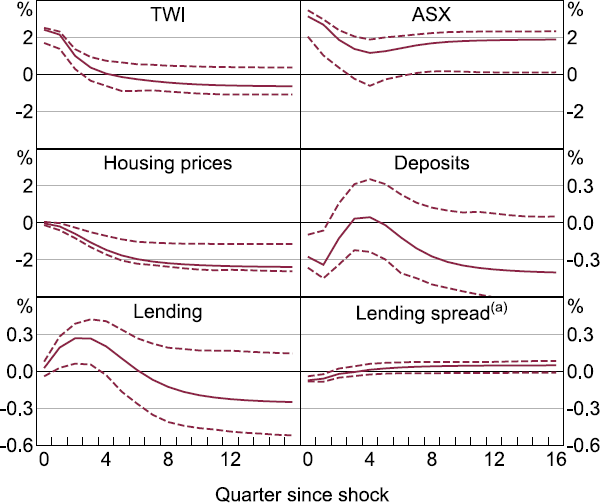
Notes:
Dashed lines show 68 per cent confidence interval.
(a) Spread between average lending rates and three-month bank bill swap rate.
IRFs for a shock to the second factor
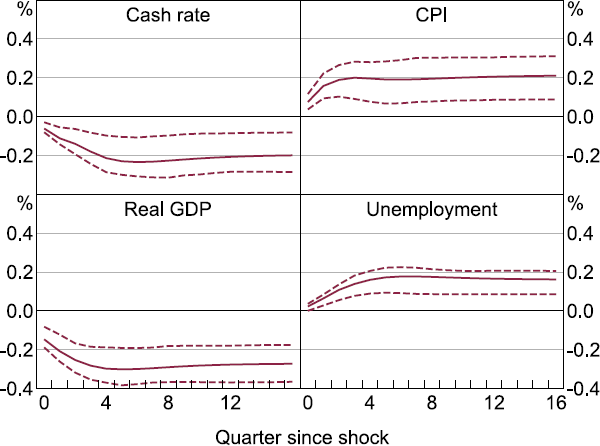
Note: Dashed lines show 68 per cent confidence interval.
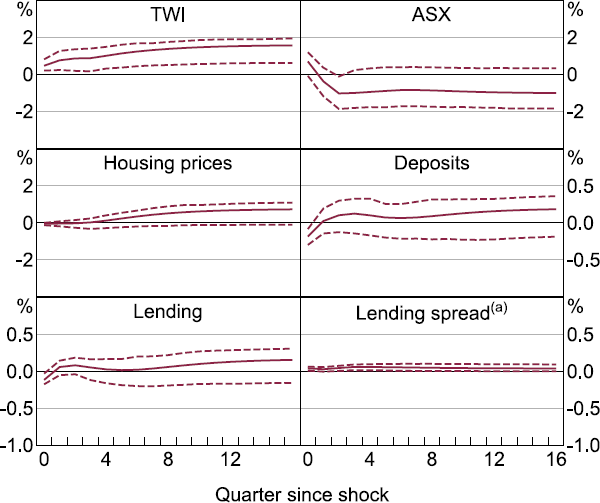
Notes:
Dashed lines show 68 per cent confidence interval.
(a) Spread between average lending rates and three-month bank bill swap rate.